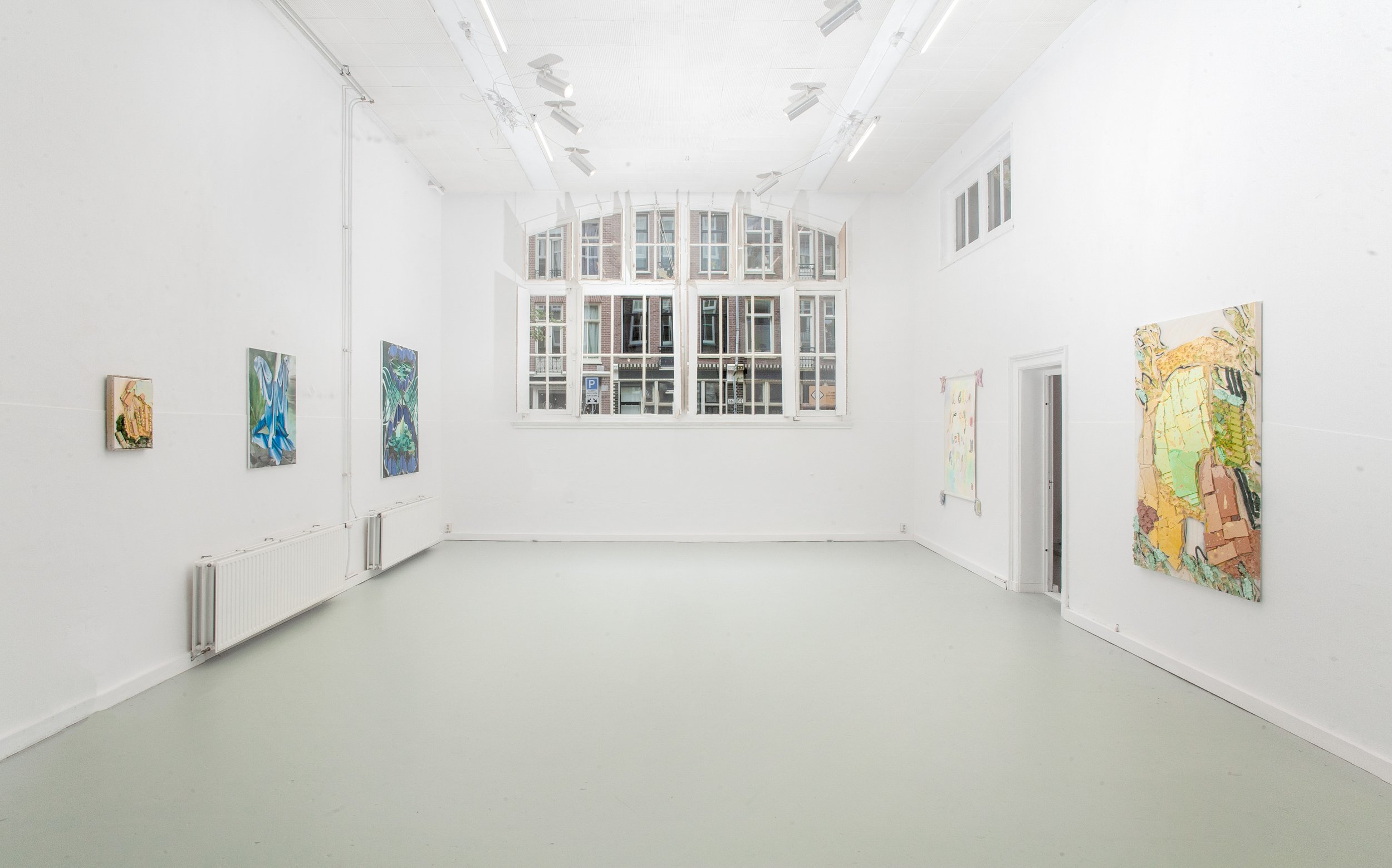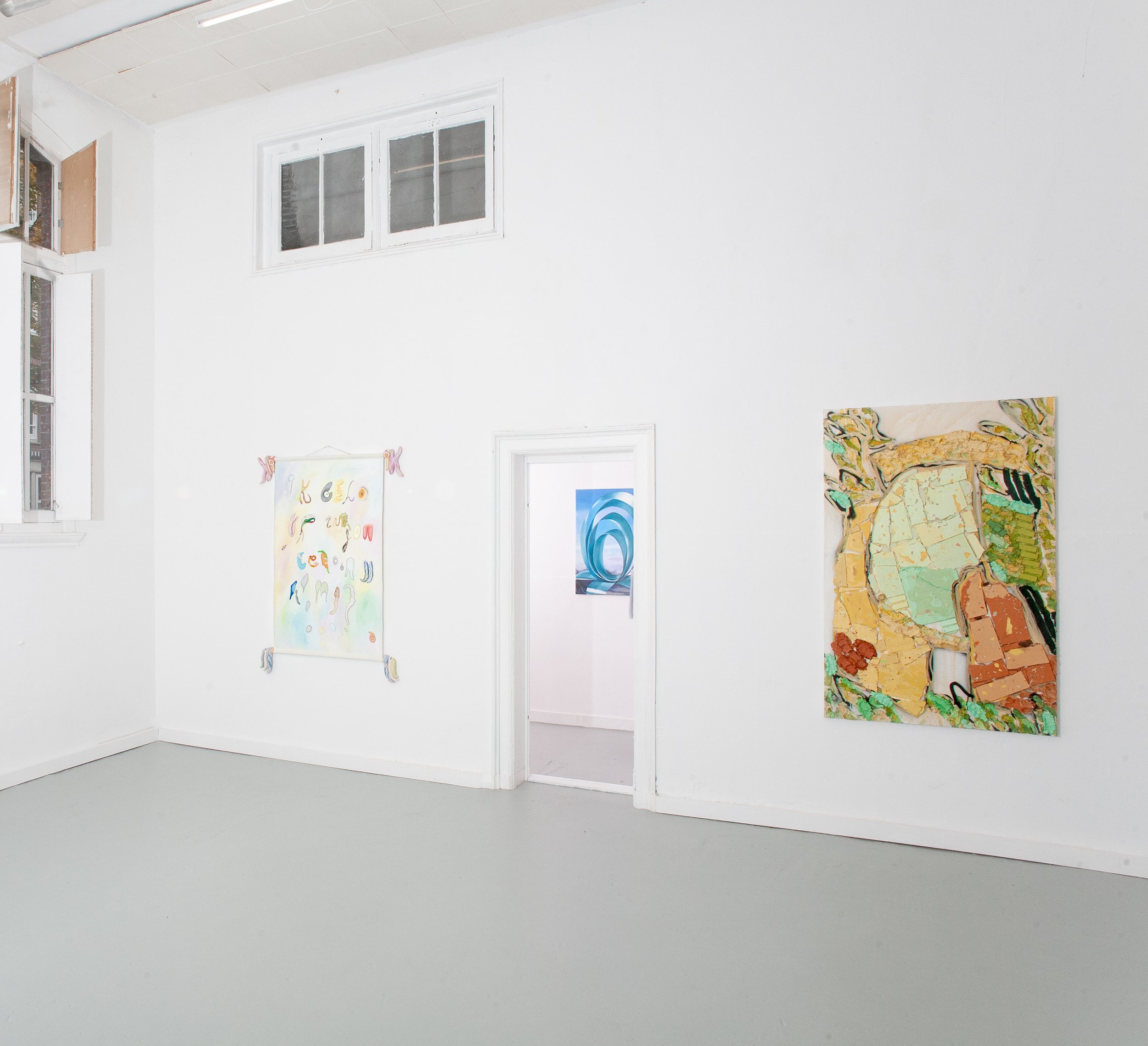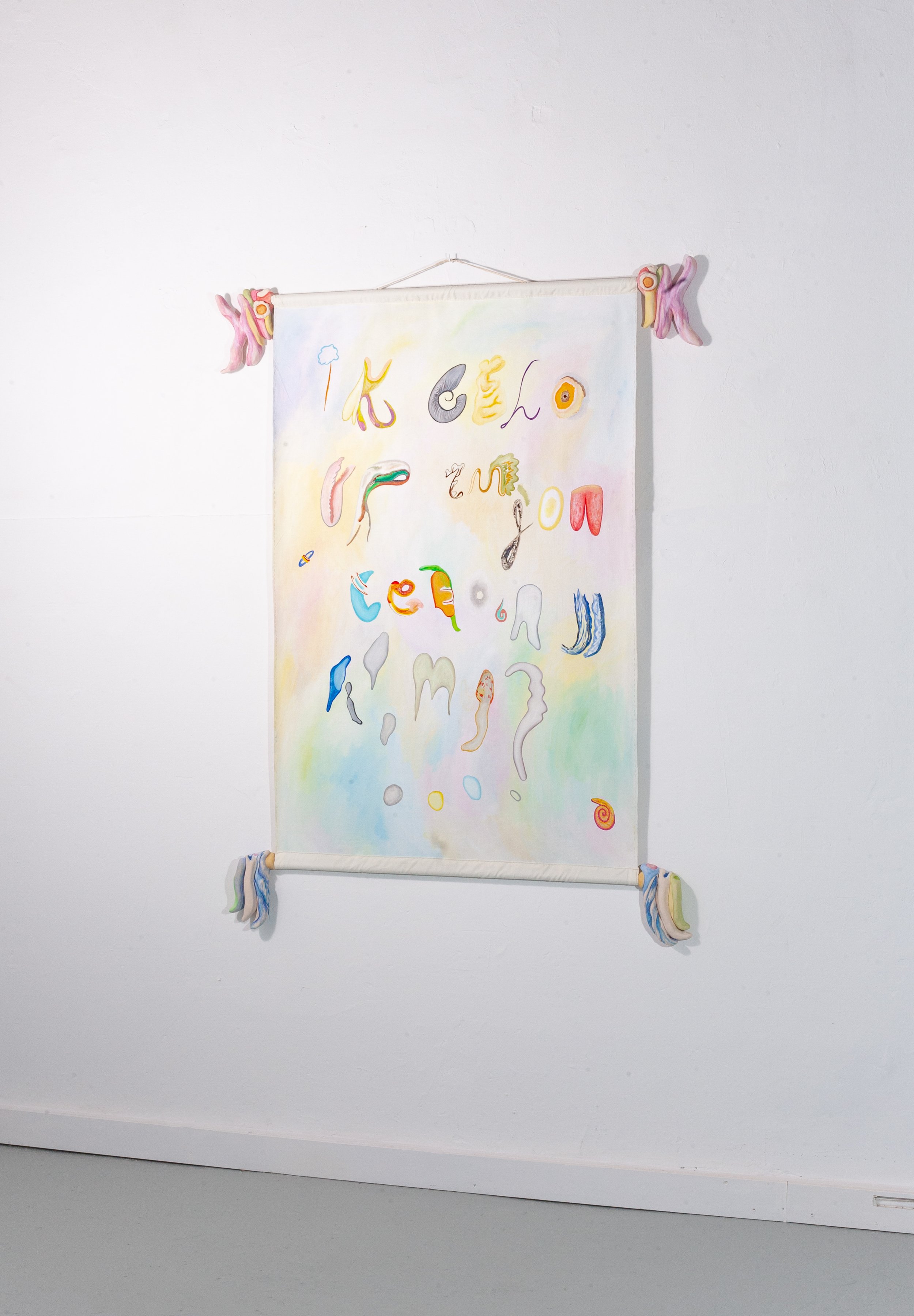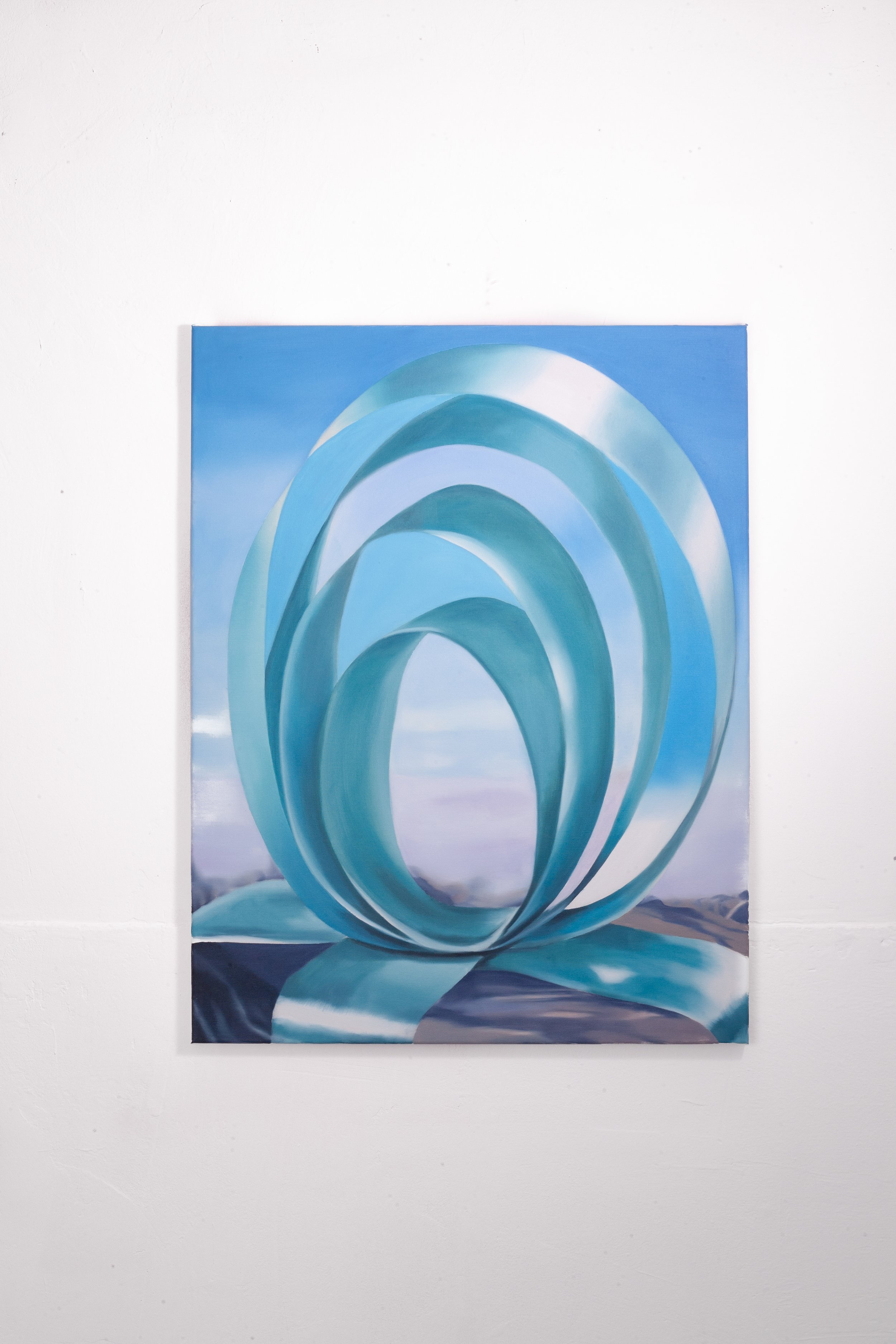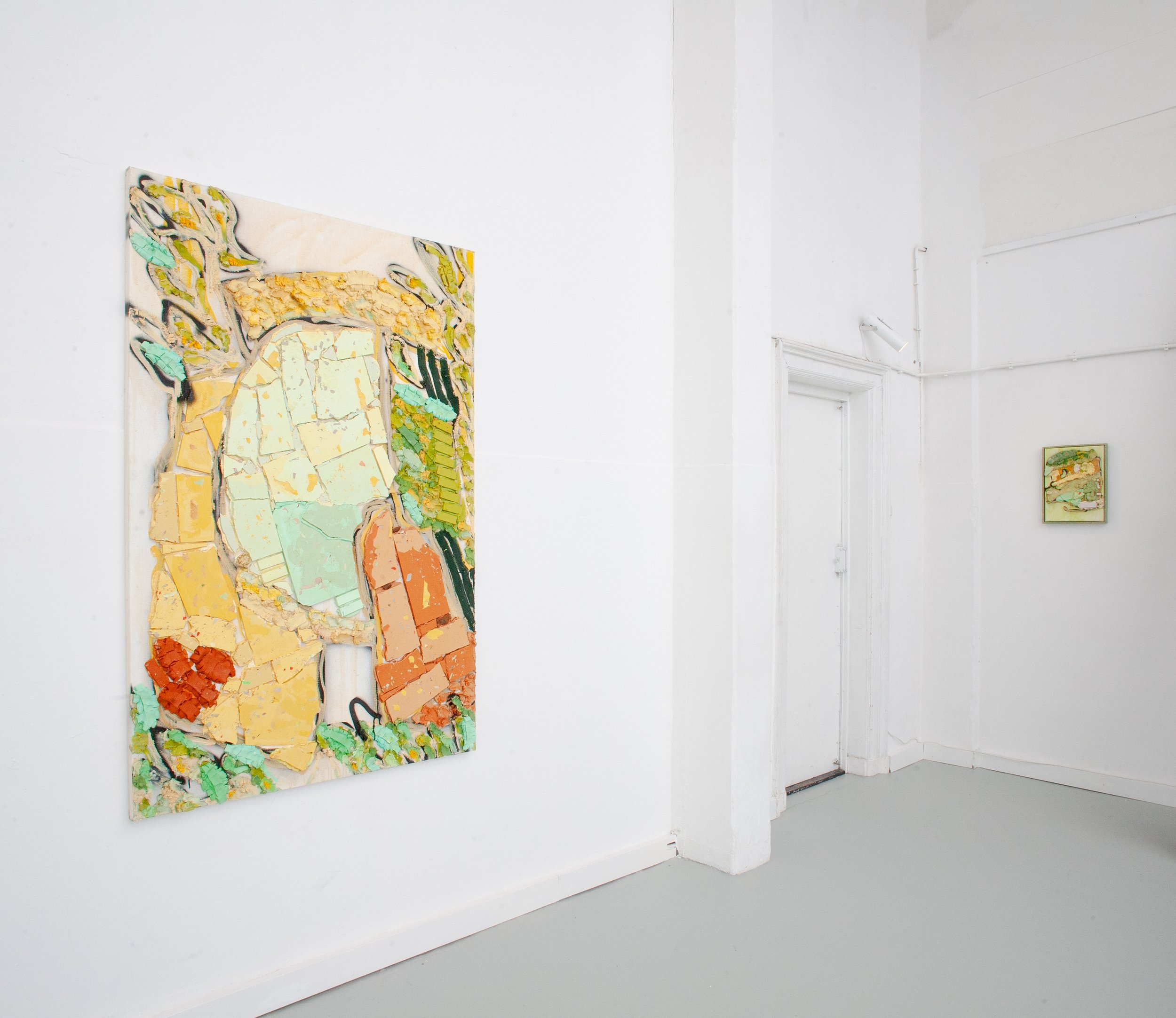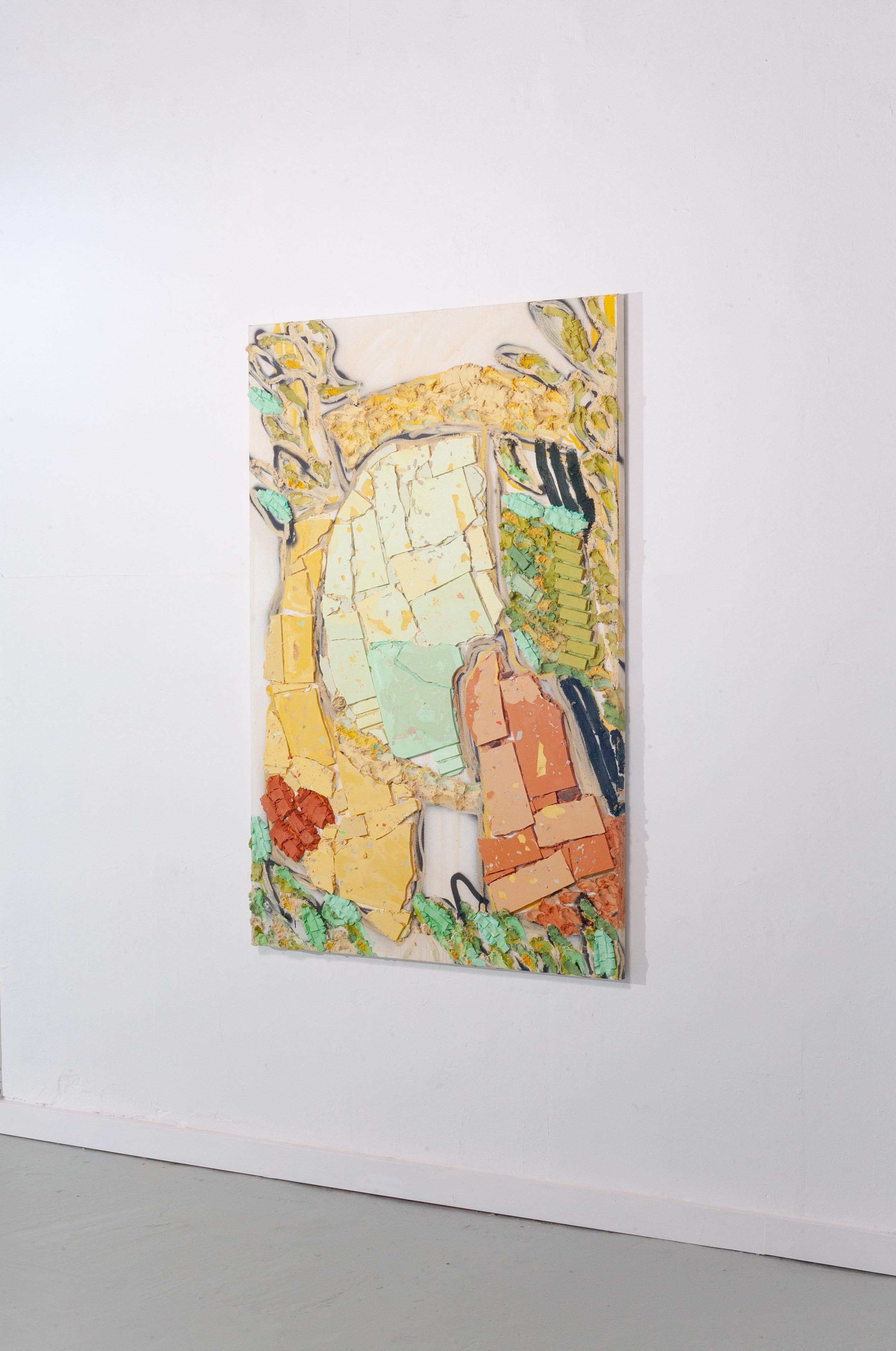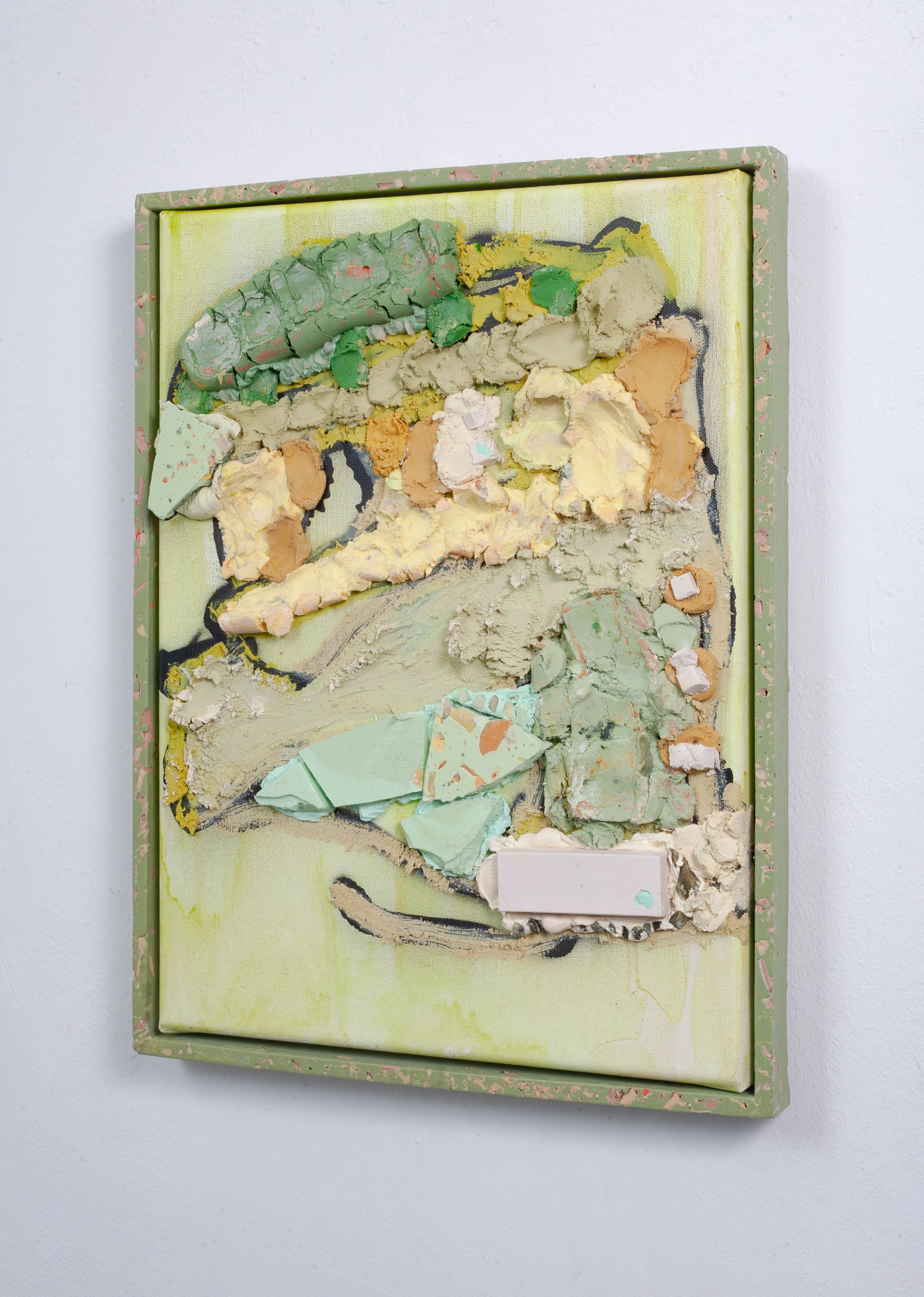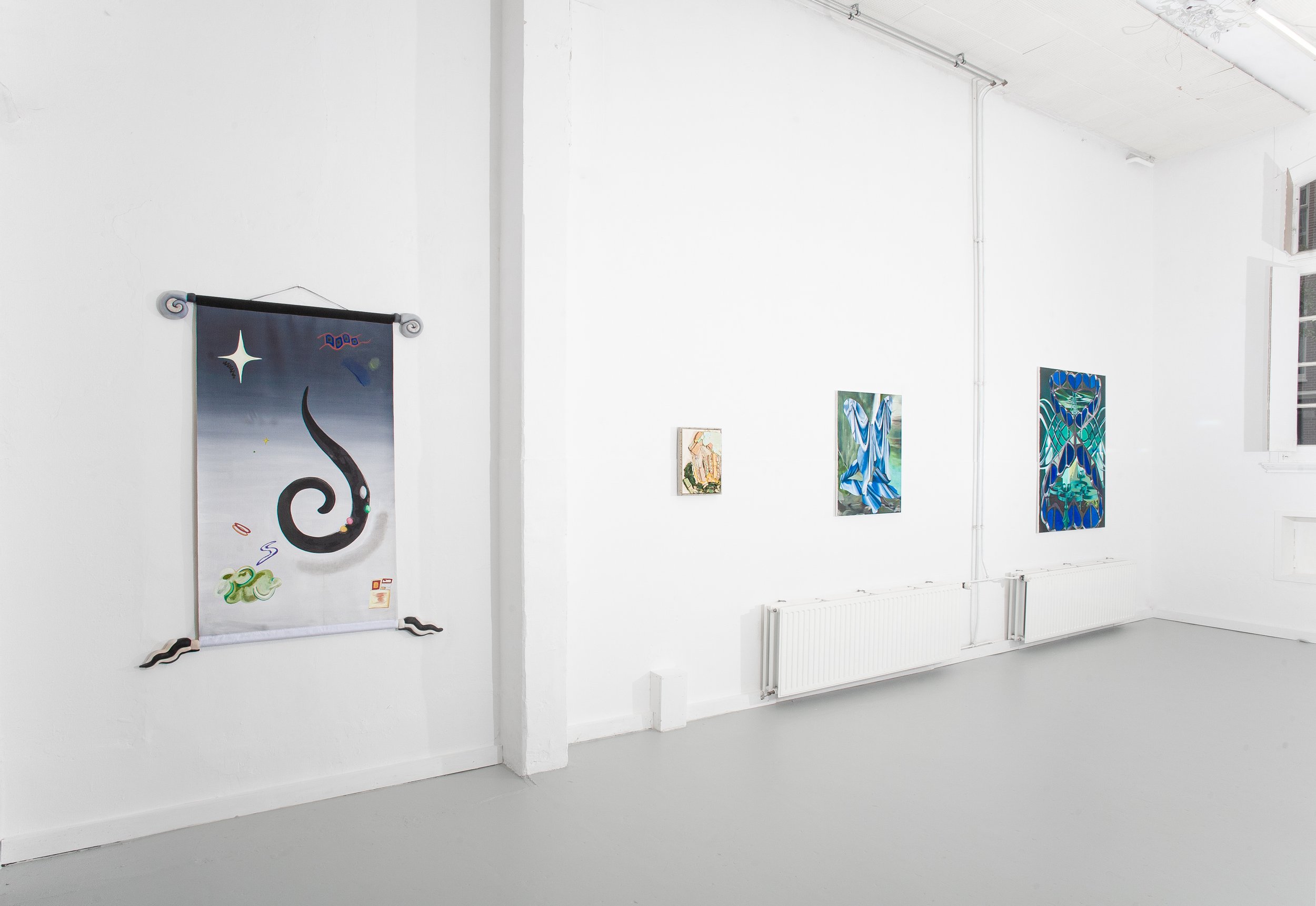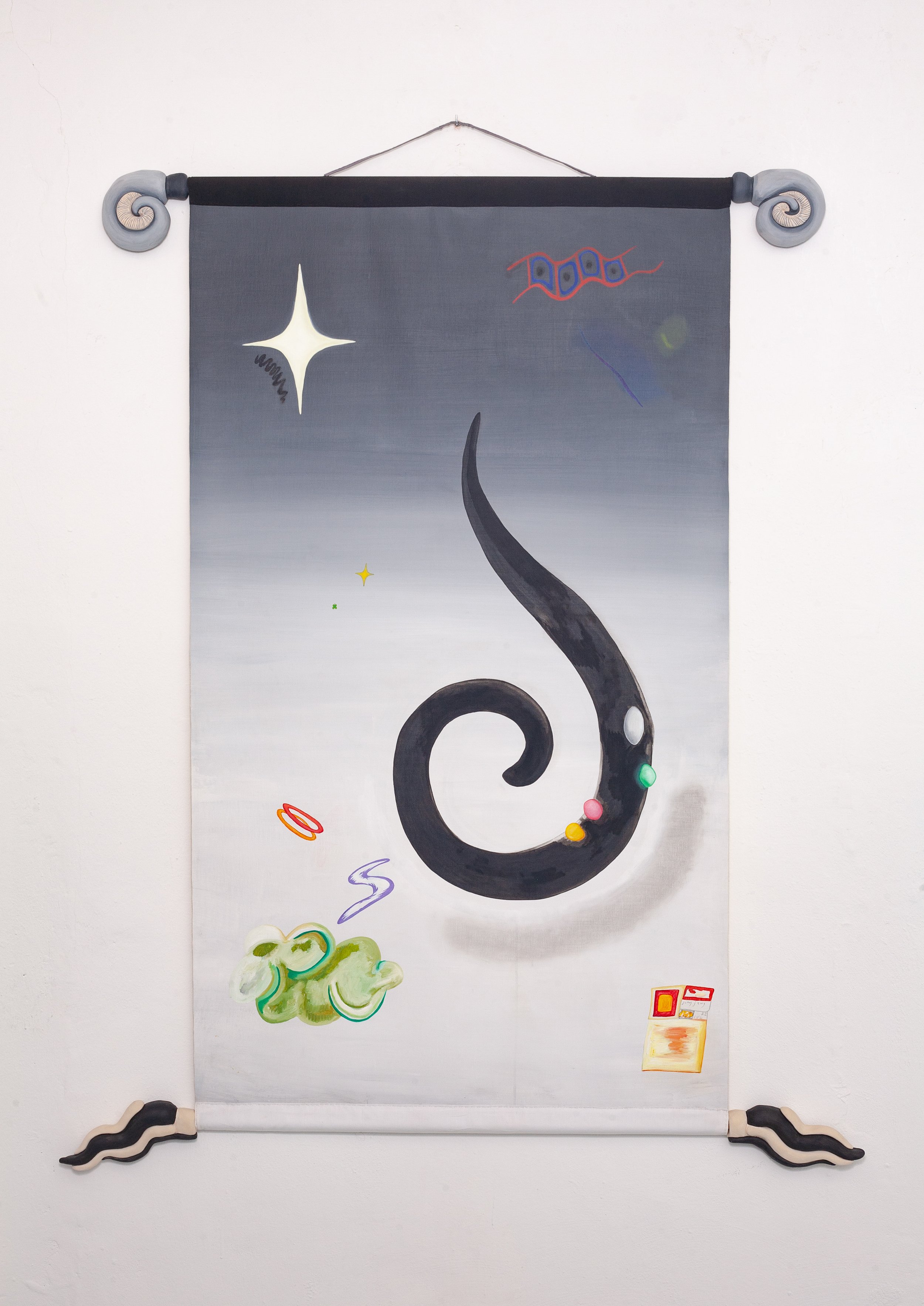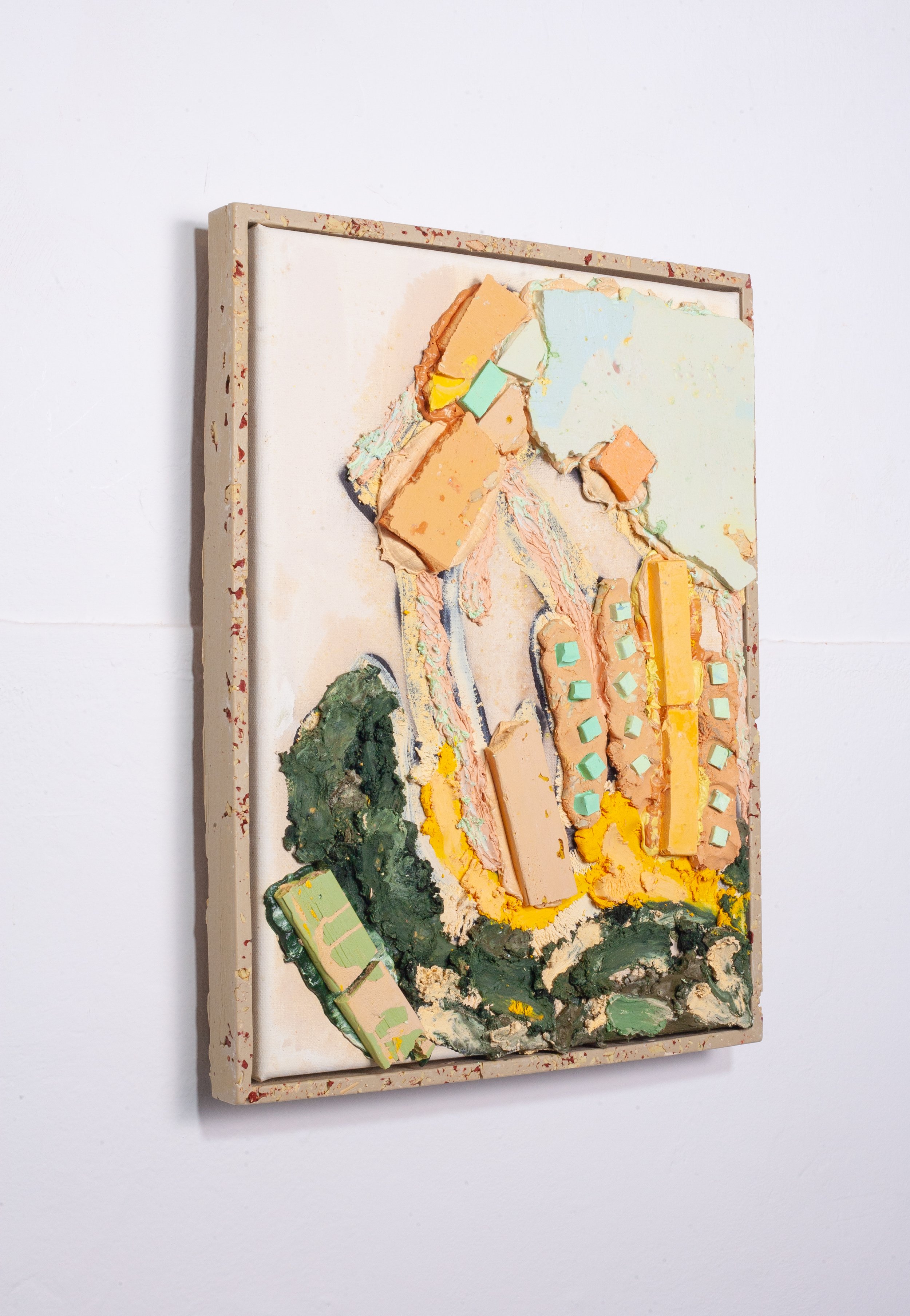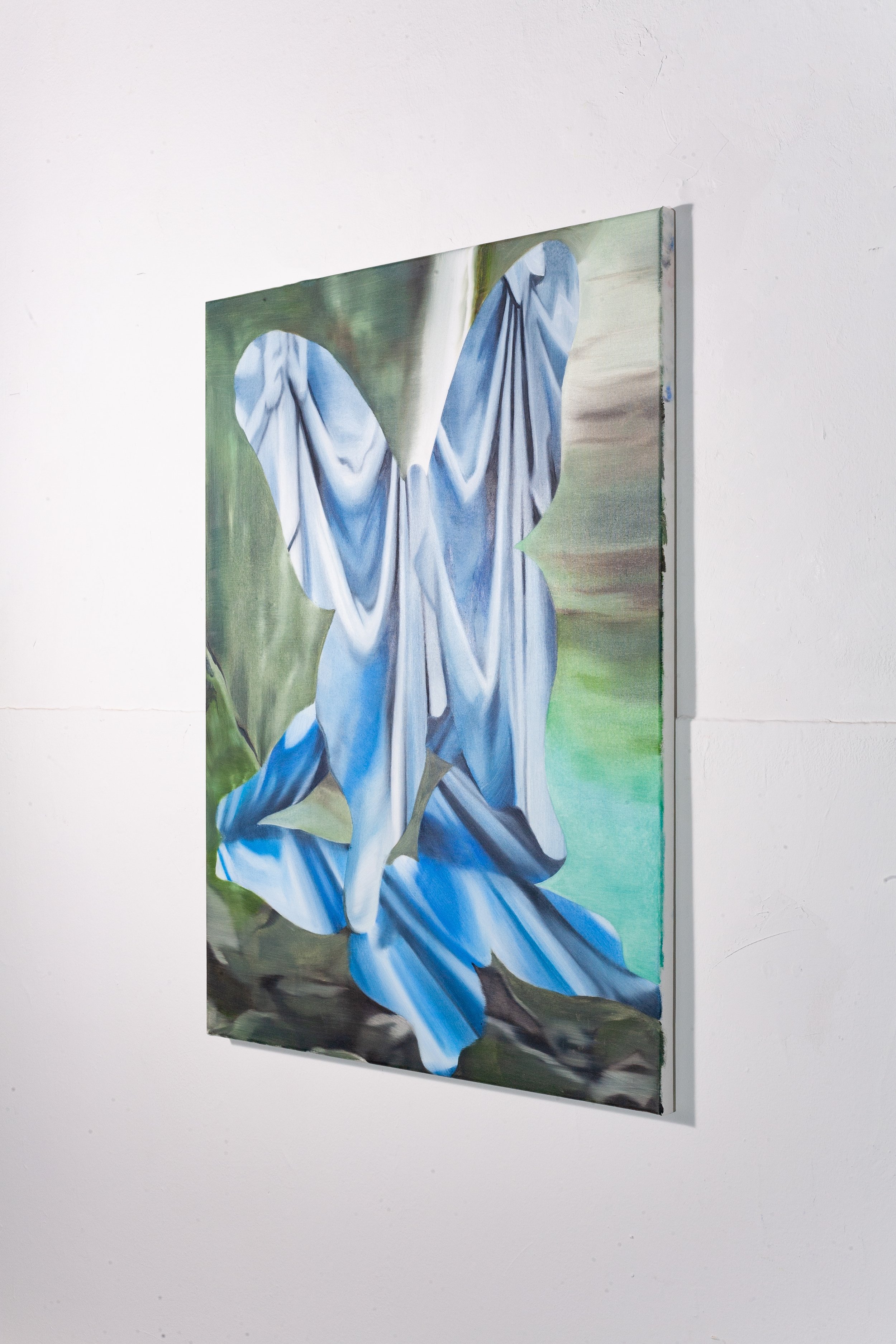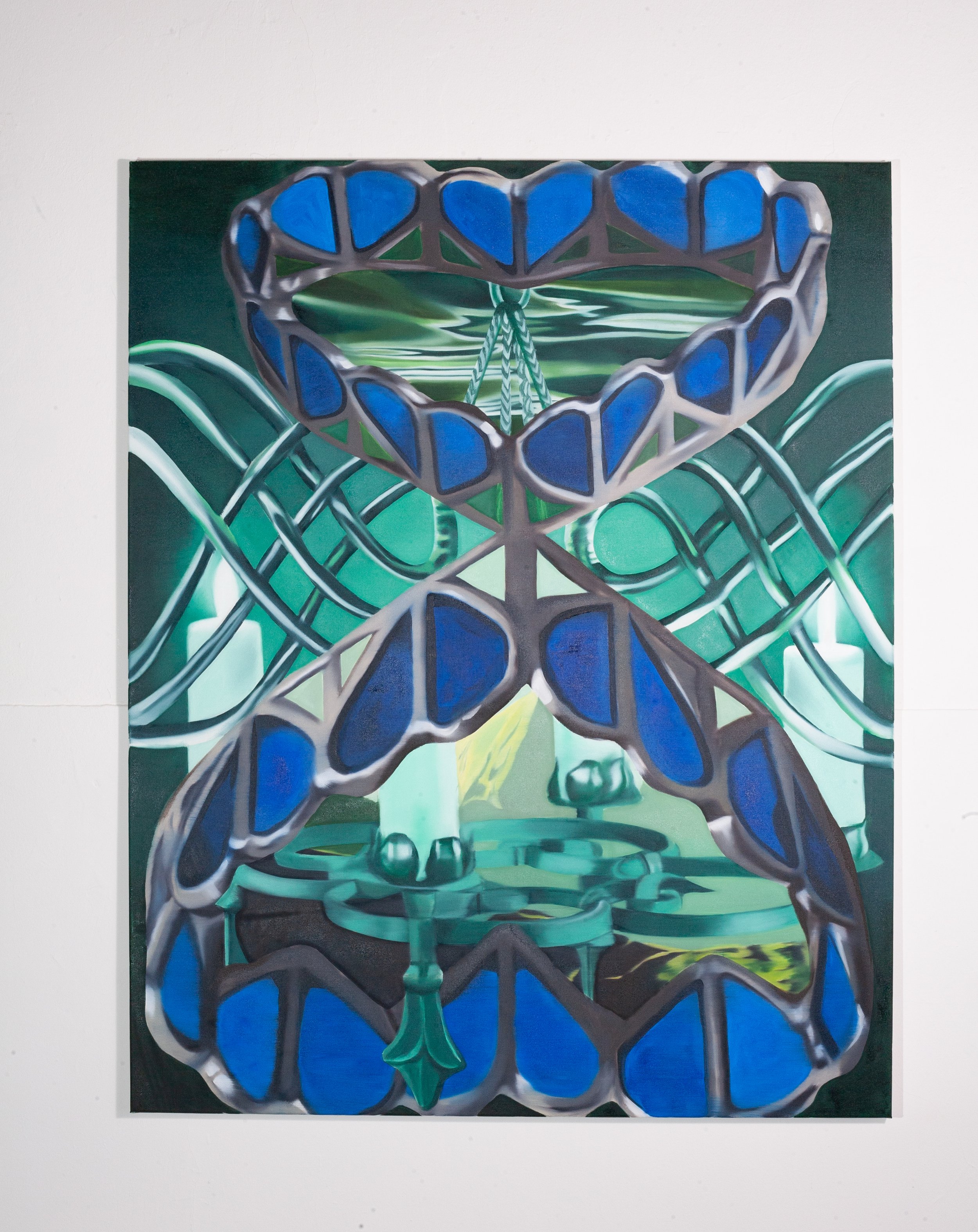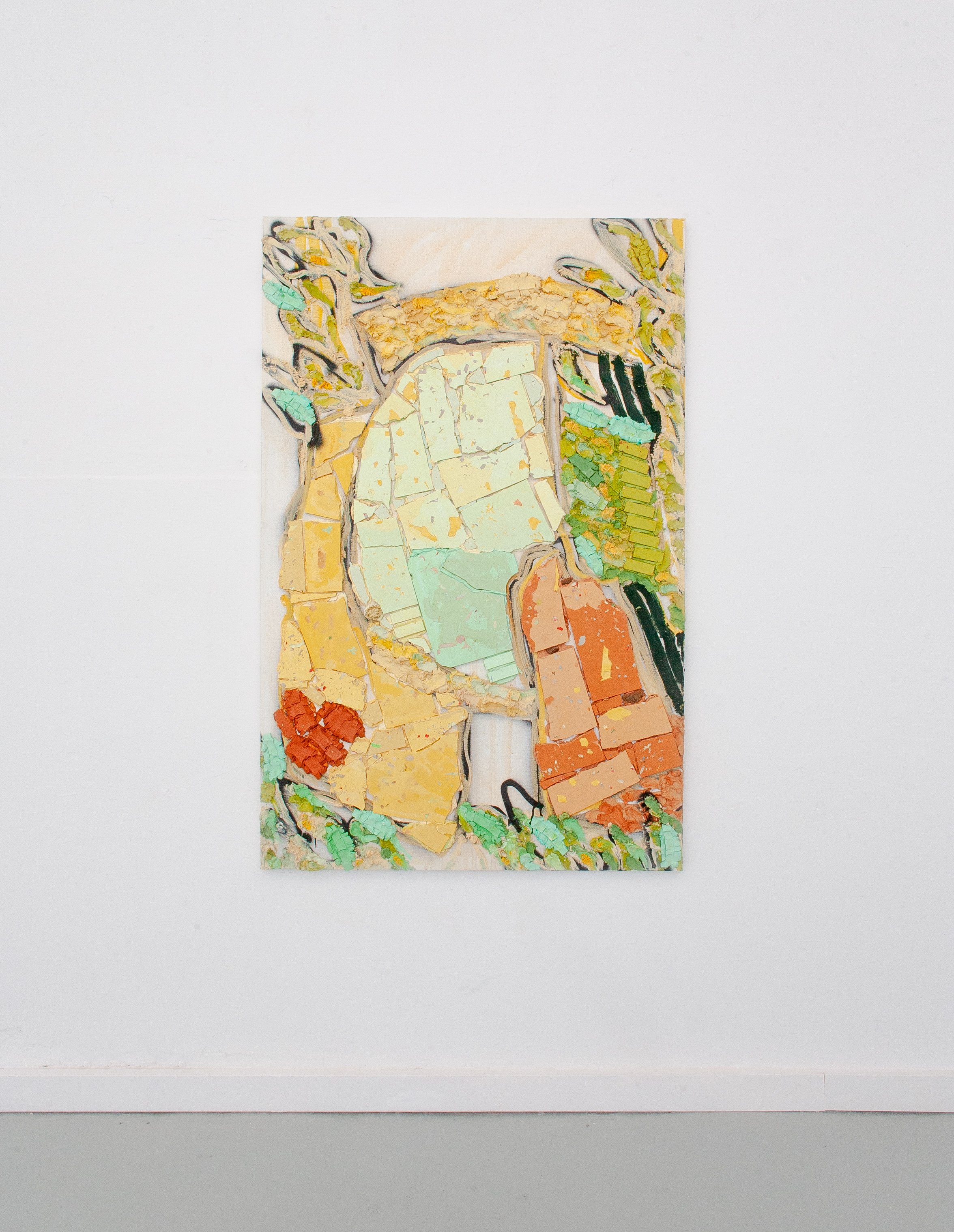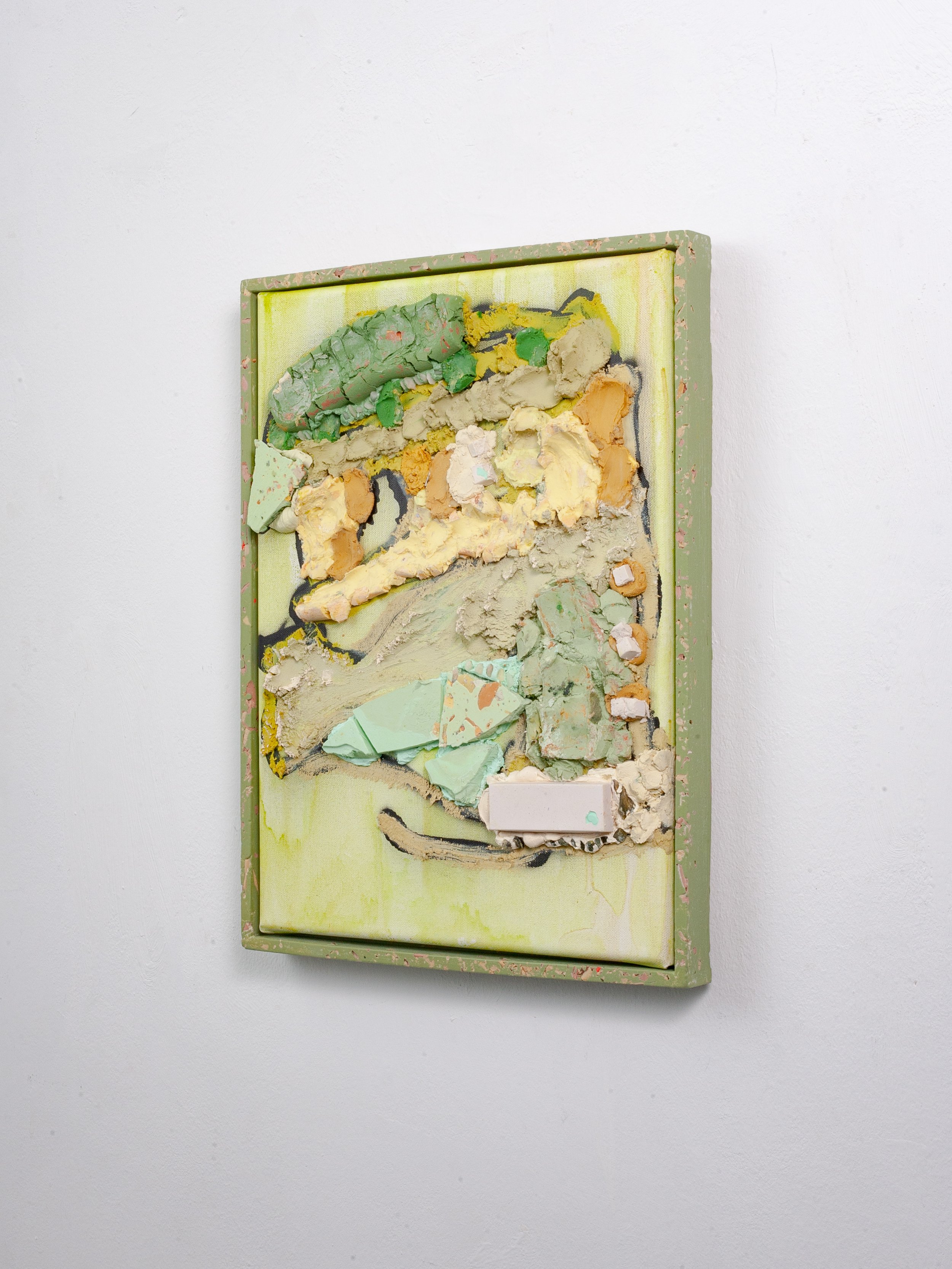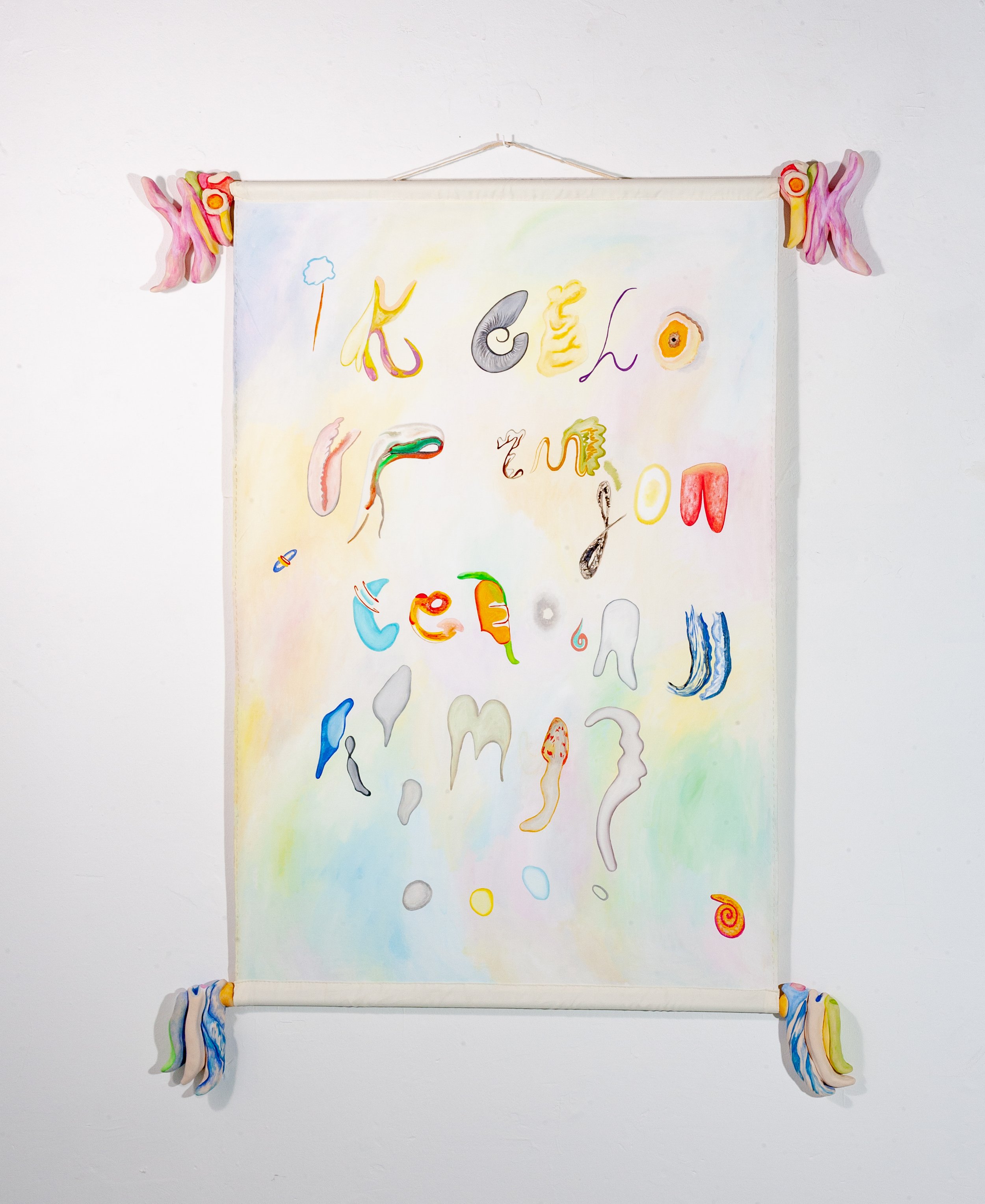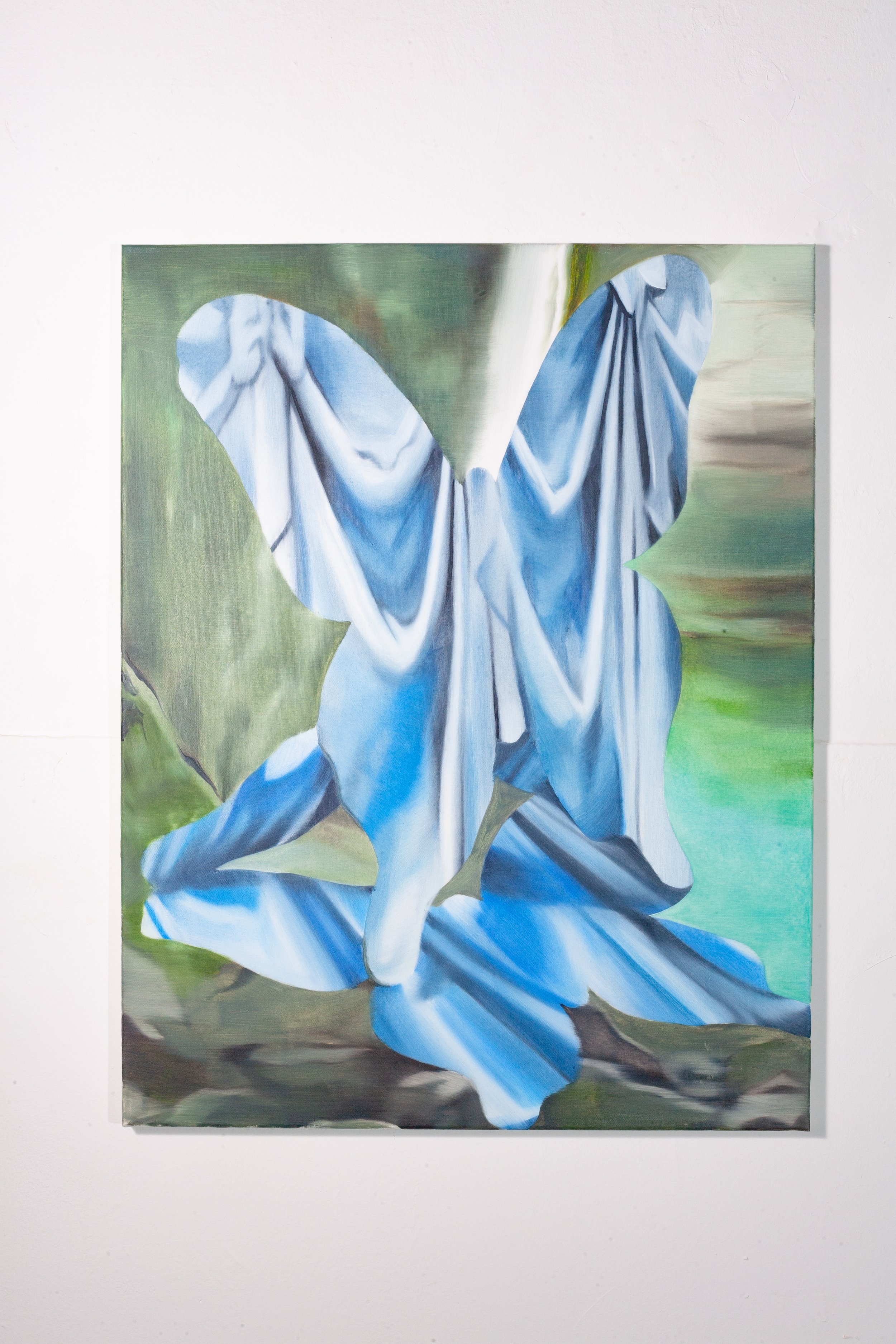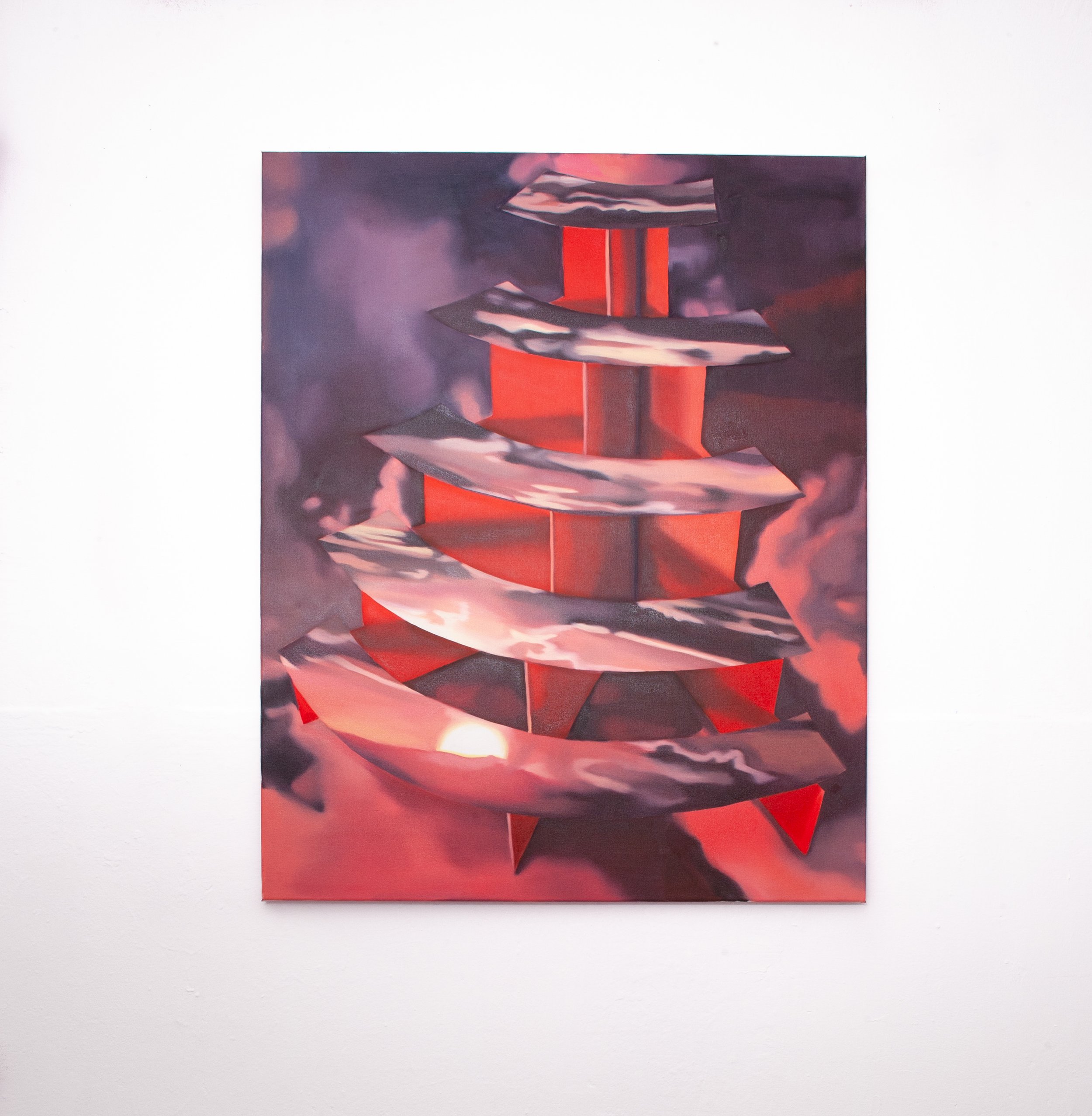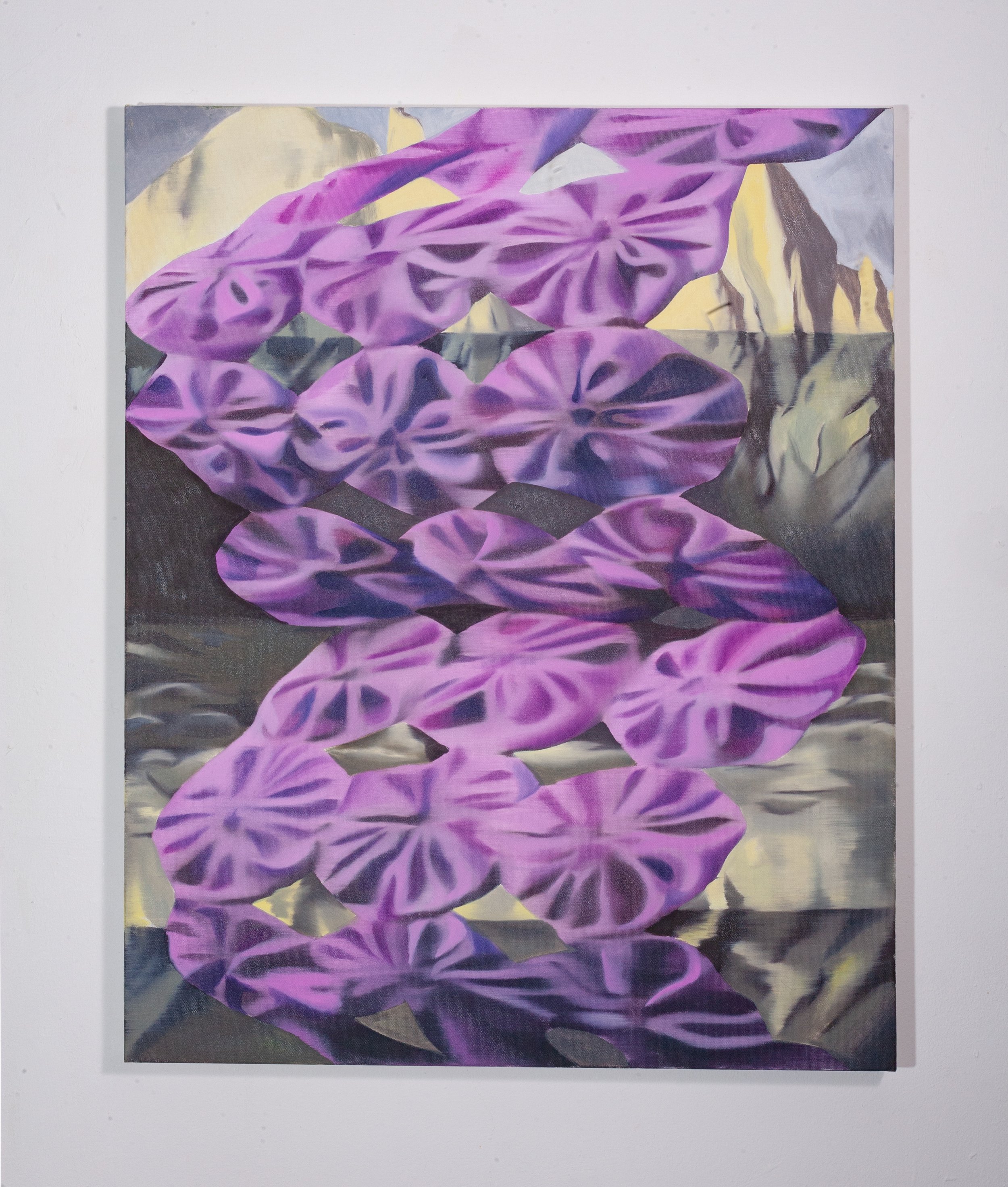In Painter's Painters we present three painters who are exploring the medium and pushing its boundaries in different ways. Three artists known for inspiring other painters through their particular way of working: Isa van Lier, Natacha Mankowski and Mirjam Vreeswijk.
These young artists stand in the tradition of painting but use it in their non-conformist way of working. They know the technique so well that they can bend it to their will. For them, a frame is not a border or protection but part of the artwork. And they experiment with their own made paint and explore the boundaries with sculpture and architecture. They give us a glimpse of a new kind of painting.
Dressed in Wild, 2022
Paintings in the realm of sculpture
Defying the boundaries between different artistic disciplines, Natacha Mankowski’s (FR, 1986) work is characterised by an exuberant use of the impasto technique, through which she creates textural and spatial shapes that moves her paintings into the realm of sculpture. Mankowski takes a keen interest in environmental landmarks and sites such as mines or stone quarries, from which architects and builders collect their raw materials. She uses samples of these materials to create the thick impasto paint that texture her painterly work and question our relationship to the overuse of natural resources.
In this exhibition, Mankowski is showing recent work from her 'Ophite Painting' series. The works are inspired and represent the Panormos marble quarry located on the Greek island of Tinos. The marble originating from this quarry is characterised by the expressive green colour 'verde antico'. Pigments, sand, wax, oil and pebbles from the green marble that Mankowski found in the quarry found their way into the paintings in this exhibition.
Big Gesture, 2022
Mastery of technique
Mirjam Vreeswijk (NL, 1997) uses a variety of painting techniques: taping the canvas, rubbing paint with cloths, putting glints in copper pots in which a reflection of the artist at work can be seen. They are evidence of perfect mastery of the medium. She turns these techniques to her advantage when painting her self-made collages in which reality interweaves with dream and fantasy.
For this exhibition, Vreeswijk created a series of paintings around the theme of sets from theaters and black-and-white films. In her paintings, she always plays with what is real or an illusion, and what has depth or is actually flat. In the painting Untitled, for instance, we see a butterfly, like a set piece on stage. The insect's shape creates movement, which contrasts with the static of the set piece, as if it has the desire to fly away. The green background in her new works is reminiscent of old horror films in black and white, such as Nosferatu and Dracula. In Vreeswijk’s perception, a green haze comes over the film image, an atmosphere that appeals to her. She enhances this eerie feeling by using candles as a light source, giving the painting a great light-dark contrast which creates a dramatic effect.
Crossing the border of painting
Isa van Lier (Amsterdam, 1996) is in search of what the edges of the painting are. She does not stretch her canvases, but presents them as scrolls, with dowels at the top and bottom. For this, she looked to Japanese paintings, such as the kakejiku (掛軸, "hung scroll"). By decorating the dowels, she adds a new layer to this traditional technique. She crafts the wood, turning it into sculptures that carry the painting.
These sculptures emerge from the world she is trying to create, with its own universal visual language of shapes and colours. With this world, she immerses the viewer in wonder and brings out a childlike curiosity. The inspiration came during a stay in Japan. In particular, the country's 'kawaii' culture fascinates her: a cuteness that is visible through all layers of society. Here she was also introduced to 'shinto animism', which assumes that everything and every 'thing' has a soul. Adding faces to the shapes in her work, she applies this philosophy herself.
Her paintings themselves also show animated objects. These can be letters that come to life, as is also the case in Japanese calligraphy. Or animated forms placed very thoughtfully in relation to each other, to form a perfect harmonious image, as in a Japanese rock garden.
Yin Yang, 2022
Articles about the exhibition
Gallery Viewer, Painter’s Painters
Artworks
